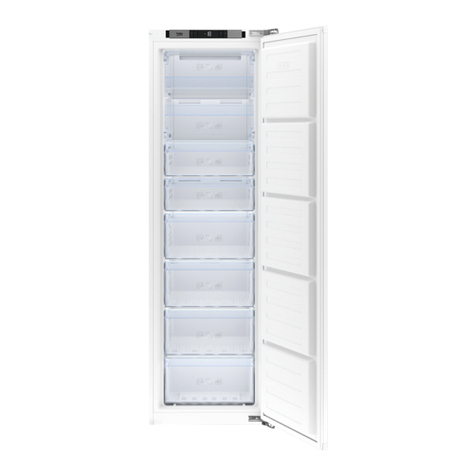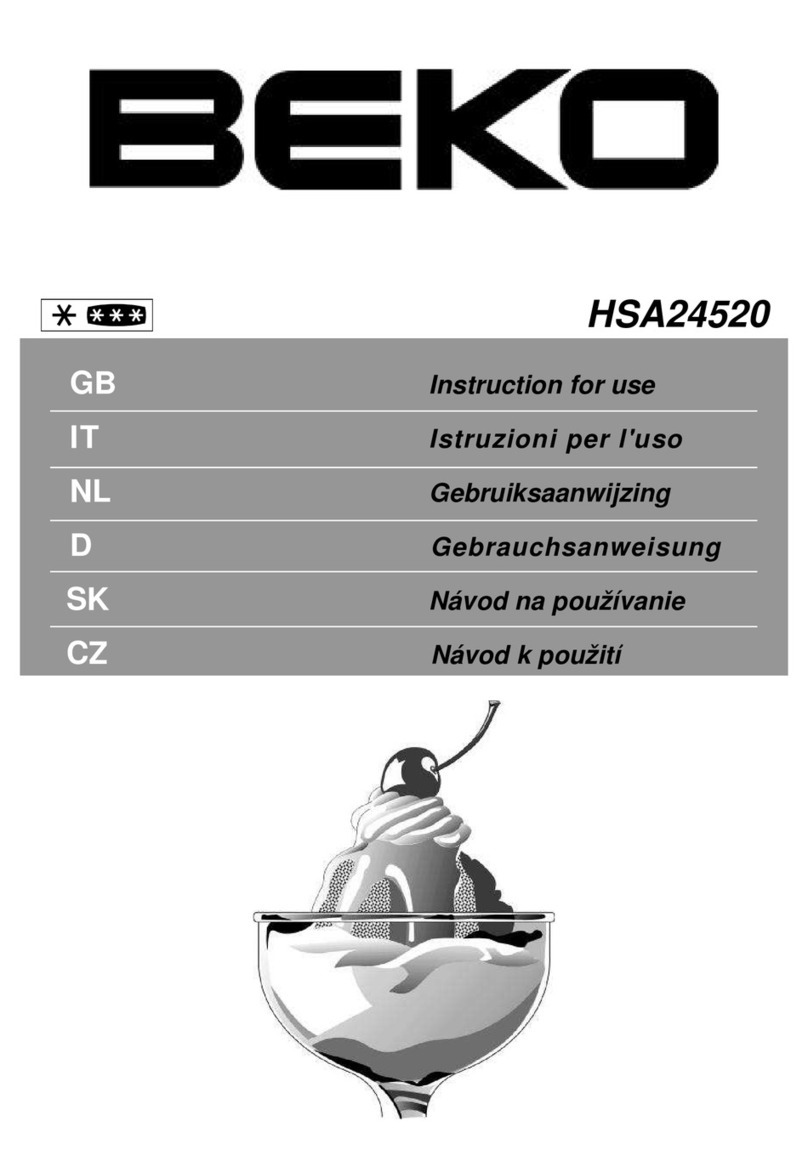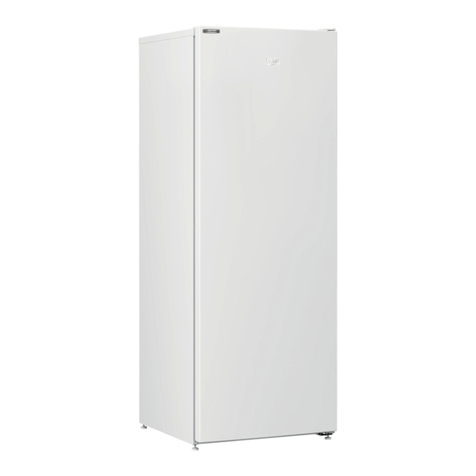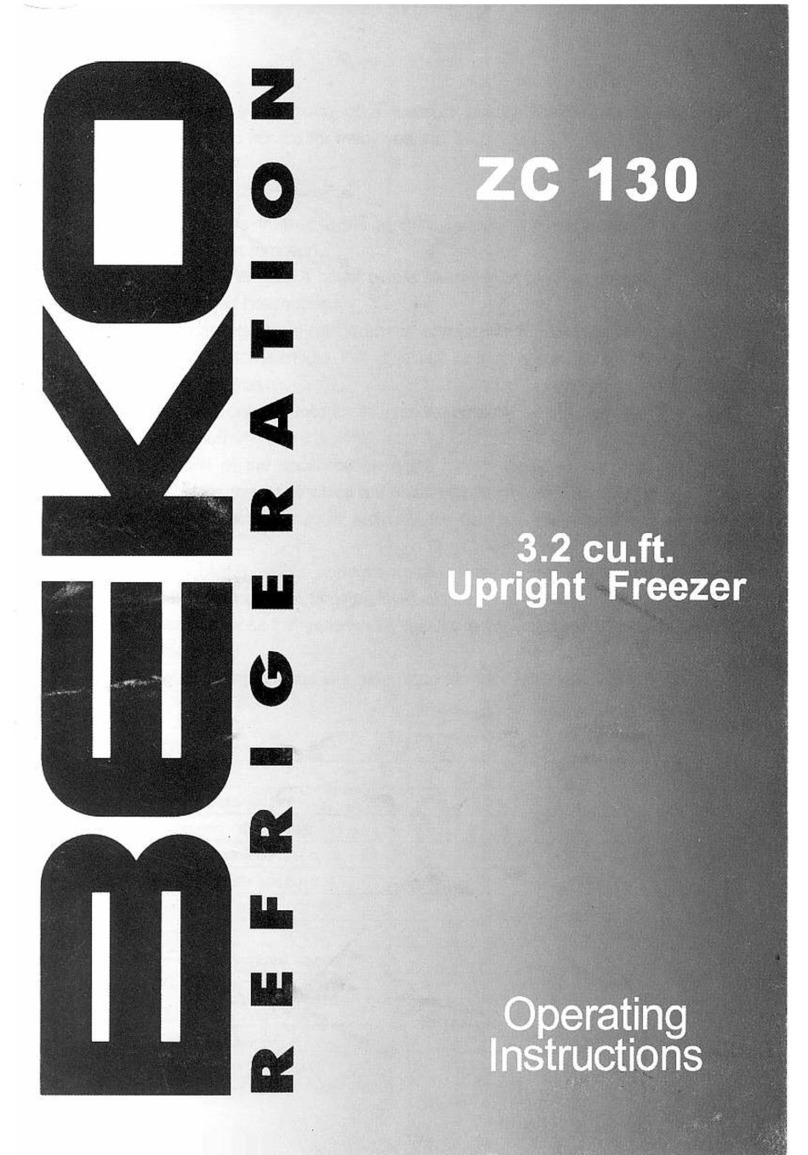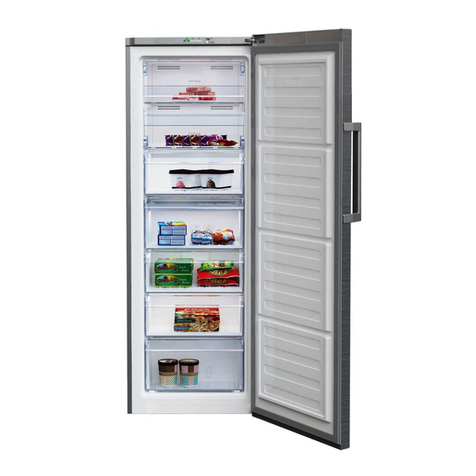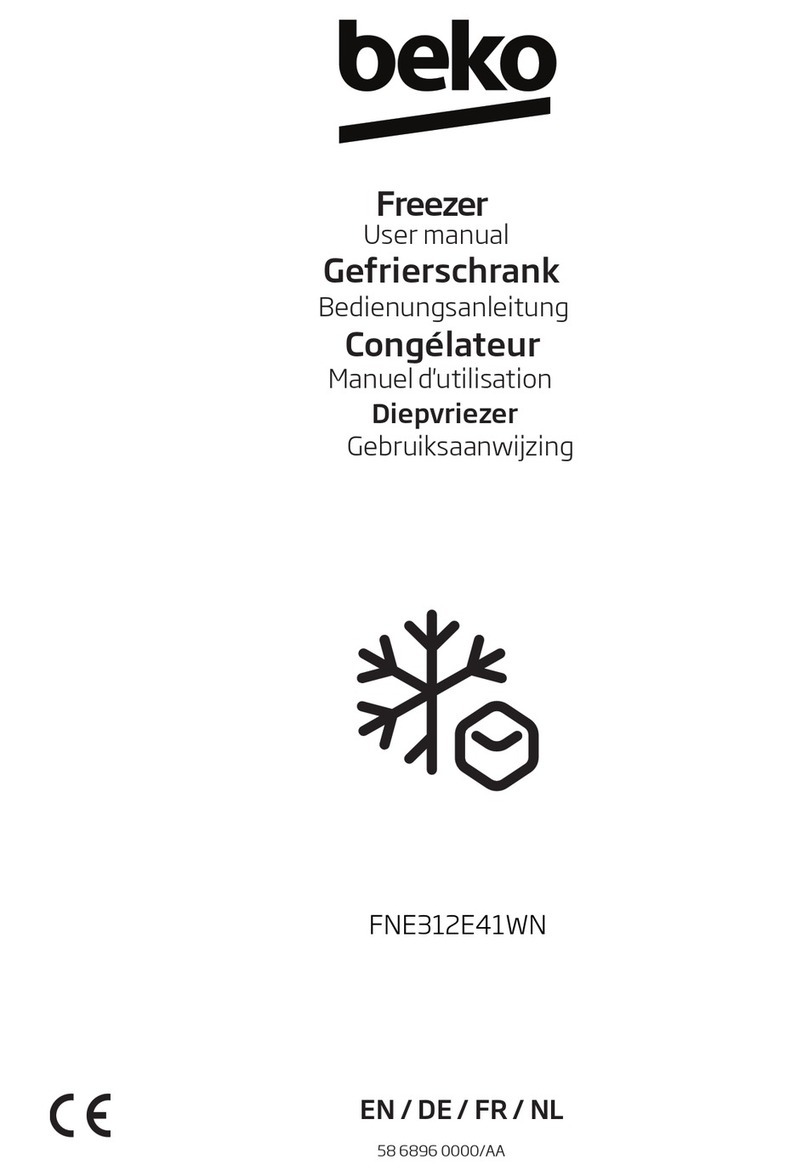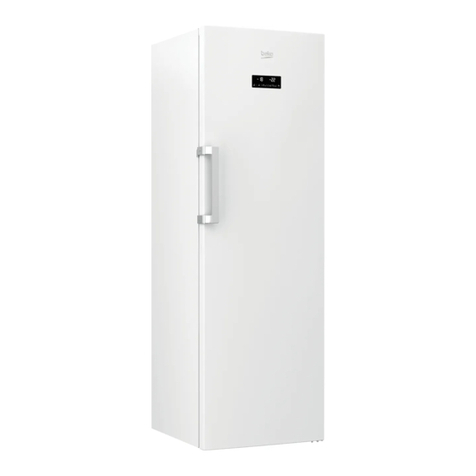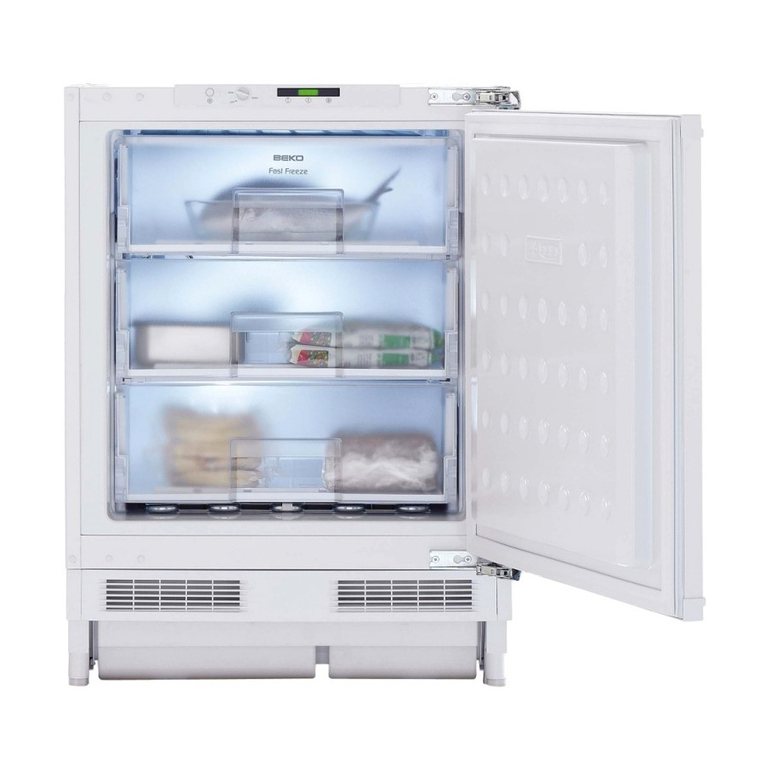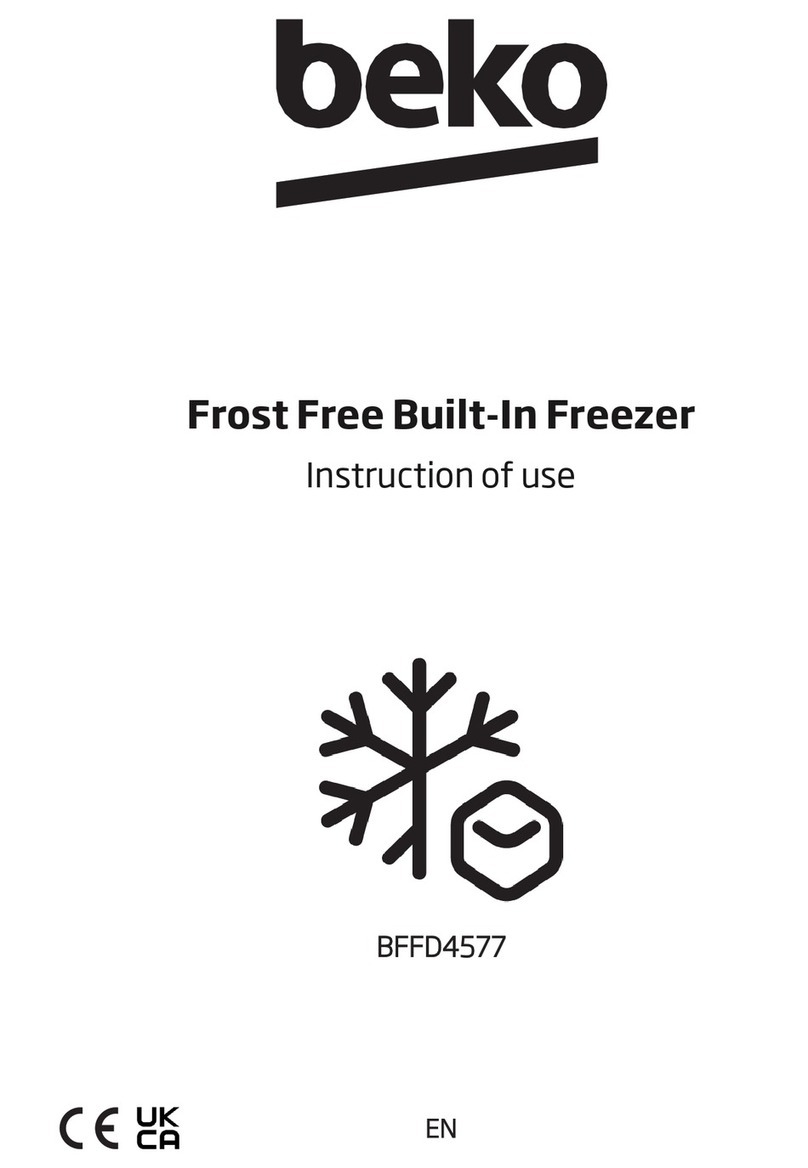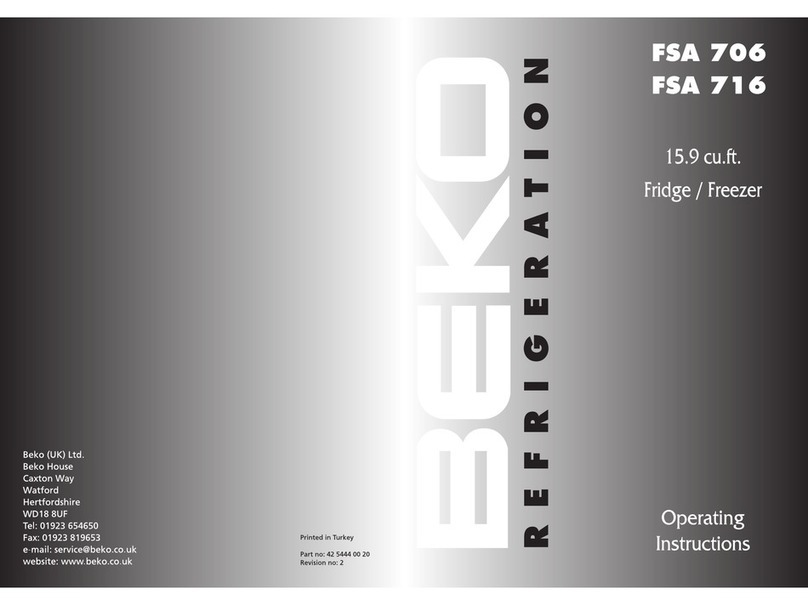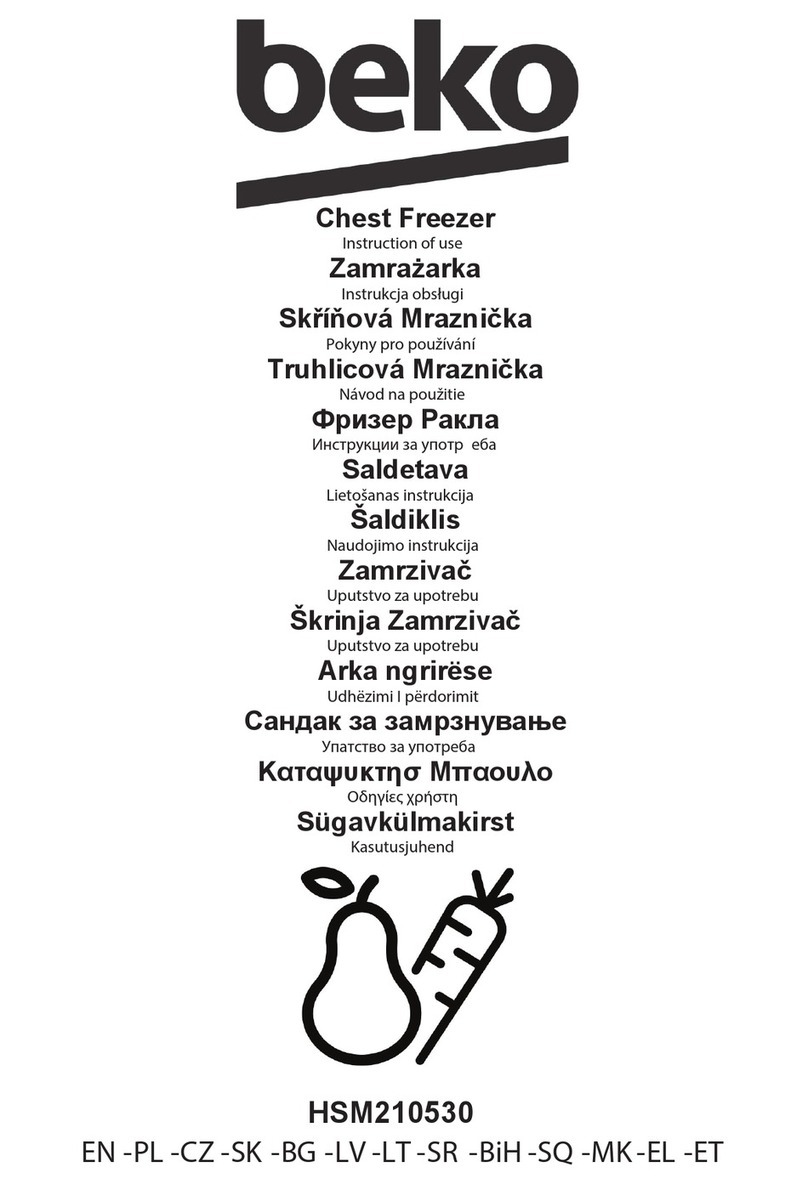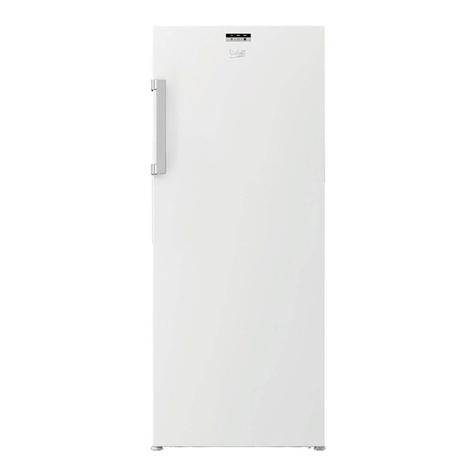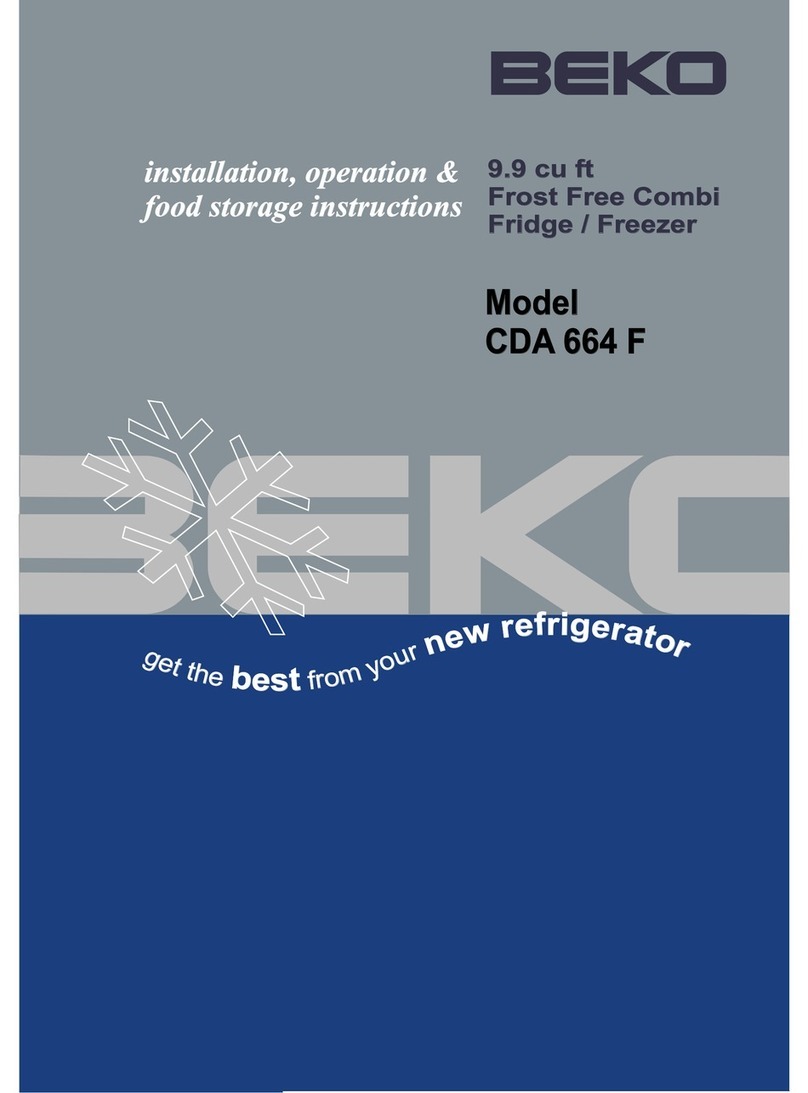
EN
5
2Warnings
• Do not connect your
appliance to the electricity
supply until all packing and
transit protectors have been
removed.
• If transported horizontally
leave to stand upright for at
least 4 hours before switching
on to allow compressor oil to
settle
• If you are discarding an old
refrigerator with a lock or latch
fitted to the door, disable the
lock/latch, ensure that it is left
in a safe condition to prevent
the entrapment of young
children.
• This fridge/freezer must
only be used for its intended
purpose i.e the storing and
freezing of edible foodstuff.
• Do not dispose of the
appliance on a fire. At Beko,
the care and protection
of our environment is an
ongoing commitment. This
appliance which is among
the latest range introduced
is particularly environment
friendly. Your appliance
contains non CFC / HFC
natural substances in the
cooling system (Called
R600a) and in the insulation
(Called cyclopentane) which
are potentially flammable if
exposed to fire. Therefore,
take care not to damage, the
cooling circuit / pipes of the
appliance in transportation
and in use. In case of damage
do not expose the appliance
to fire or potential ignition
source and immediately
ventilate the room where the
appliance is situated.
• We suggest you contact your
local authority for disposal
information and facilities
available.
• To obtain the best possible
performance and trouble free
operation from your appliance
it is very important to carefully
read these instructions.
• On delivery, check to make
sure that the product is not
damaged and that all the parts
and accessories are in perfect
condition.
• Ensure that the plug remains
readily accessible. Do not use
multiple adapter or extension
cable.
• Failure to observe these
instructions may invalidate
your right to free service
during the guarantee period.
• Keep ventilation openings, in
the appliance enclosure or in
the built-in structure, clear of
obstruction.
• Do not damage the refrigerant
circuit.
• Do not use electrical
appliances inside the food
storage compartments of the
appliance, unless they are of
the type recommended by the
manufacturer.

